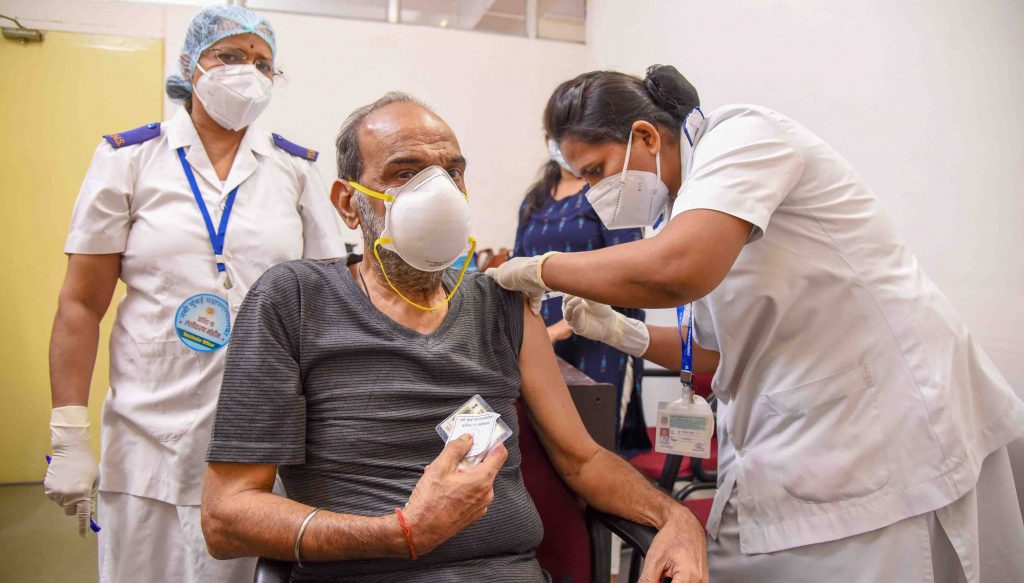New Delhi: A recommendation has been given to the Health Ministry to consider Covid-19 booster dose for those who are 40 years and older due to the threat growing out of the new variant Omicron. The World Health Organisation (WHO) has termed Omicron as a ‘Variant of Concern’. The recommendation of the booster dose has been given by a consortium of 28 laboratories (INSACOG) to monitor genomic variations in coronavirus.
“Vaccination of all remaining unvaccinated at-risk people and consideration of a booster dose for those 40 years of age and over, first targeting the most high-risk and high-exposure may be considered, since low levels of neutralising antibodies from current vaccines are unlikely to be sufficient to neutralise Omicron, although risk of severe disease is still likely to be reduced,” INSACOG said in its weekly bulletin.
Short for Indian SARS-CoV-2 Genomics Consortium, INSACOG checks variations in coronavirus across India. It helps the nation to understand how Covid-19 spreads and evolves, and to suggest the best possible public health response.
Also read: 10 Omicron suspects admitted to hospital in Delhi
“Genomic surveillance will be critical for early detection of the presence of this variant (Omicron) to enable necessary public health measures. Monitoring travel to and from known affected areas, and contact-tracing of Covid-19 cases with an epidemiological link to the affected areas has been implemented along with increased testing (with sequencing of confirmed cases),” the consortium also said in its bulletin.
The US and Britain have already cleared booster shots for some age groups. Top American infectious diseases specialist Anthony Fauci has stressed that fully vaccinated adults should seek a booster when eligible to give themselves the best possible protection.
INSACOG said preliminary evidence suggests that Omicron may increase re-infection risk, which is expected from the structural changes due to the mutations, and the number of cases of this variant appears to be increasing in almost all provinces in South Africa, where it was first detected.
